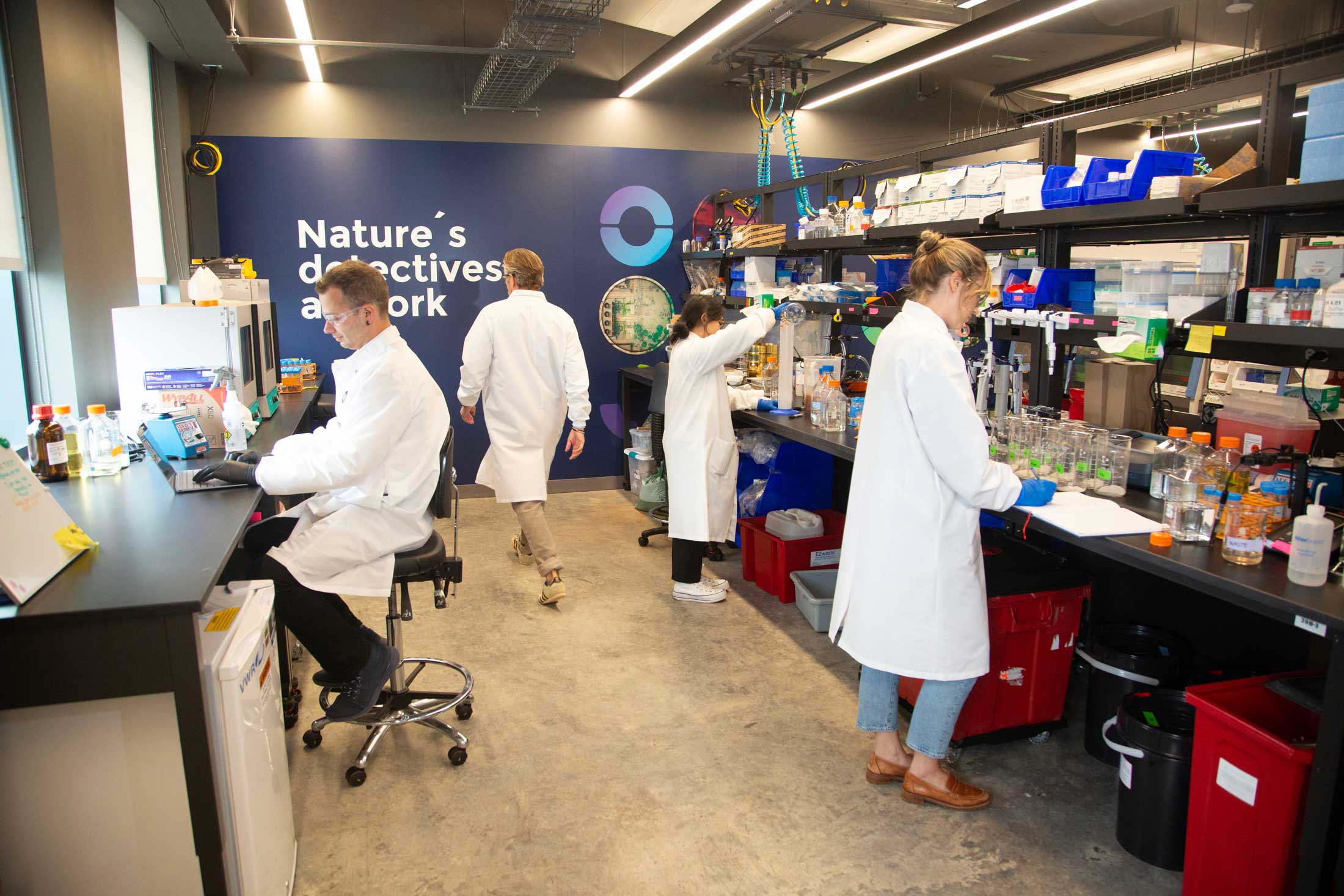Turning the Tide: Marine Microbes Combat Plastic Pollution
Genetically engineered bacteria show promise in degrading PET microplastics, potentially revolutionizing plastic waste management in oceans
Sep 21, 2023
Chaiyapreuk2520 (Canva)
A team of researchers has harnessed the power of marine microorganisms to combat the dire issue of plastic pollution in our oceans. Published in the AIChE Journal, this approach centers on the modification of a marine microorganism, enabling it to break down polyethylene terephthalate (PET), a ubiquitous plastic found in a myriad of products, from water bottles to clothing. This plastic, a prominent contributor to the ongoing scourge of microplastic pollution in our oceans, has long eluded efficient remediation efforts.
Nathan Crook, assistant professor of chemical and biomolecular engineering at North Carolina State University, expressed his enthusiasm for the project's potential. "This is exciting because we need to address plastic pollution in marine environments. One option is to pull the plastic out of the water and put it in a landfill, but that poses challenges of its own. It would be better if we could break these plastics down into products that can be reused. For that to work, you need an inexpensive way to break the plastic down. Our work here is a big step in that direction."
The research team utilized two distinct species of bacteria, each possessing unique characteristics. Vibrio natriegens, which thrives in seawater and reproduces very quickly, was combined with Ideonella sakaiensis, which can produce enzymes capable of breaking down PET plastic.
The genetic sequence from I. sakaiensis, responsible for the plastic-degrading enzymes, was transferred into V. natriegens, resulting in a V. natriegens strain capable of producing the enzymes on the surface of its cells. Subsequent experiments demonstrated that the transformed V. natriegens could effectively break down PET in a saltwater environment at room temperature.
Dr. Crook shared his excitement. "This is scientifically exciting because this is the first time anyone has reported successfully getting V. natriegens to express foreign enzymes on the surface of its cells."
Tianyu Li, the first author of the paper and a Ph.D. student at NC State, emphasized the practical implications. "From a practical standpoint, this is also the first genetically engineered organism that we know of that is capable of breaking down PET microplastics in saltwater. That's important because it is not economically feasible to remove plastics from the ocean and rinse high-concentration salts off before beginning any processes related to breaking the plastic down."
“However, while this is an important first step, there are still three significant hurdles,” Crook says. “First, we’d like to incorporate the DNA from I. sakaiensis directly into the genome of V. natriegens, which would make the production of plastic-degrading enzymes a more stable feature of the modified organisms. Second, we need to further modify V. natriegens so that it is capable of feeding on the byproducts it produces when it breaks down the PET. Lastly, we need to modify the V. natriegens to produce a desirable end product from the PET—such as a molecule that is a useful feedstock for the chemical industry.”
"Honestly, that third challenge is the easiest of the three. Breaking down the PET in saltwater was the most challenging part."
Dr. Crook extended an invitation to industry groups to trigger discussions about other molecules that would be desirable for the V. natriegens to produce. Emphasizing the vast potential for scalable production, Dr. Crook asked, "Given the range of molecules we can induce the bacteria to produce and the potentially vast scale of production, which molecules could industry provide a market for?"
As the battle against ocean plastic pollution rages on, the intersection of genetic engineering and environmental conservation offers a glimmer of hope for a cleaner, more sustainable future. This pioneering research not only heralds a major step forward but also underscores the importance of innovative solutions in addressing one of the planet's most pressing challenges.


















